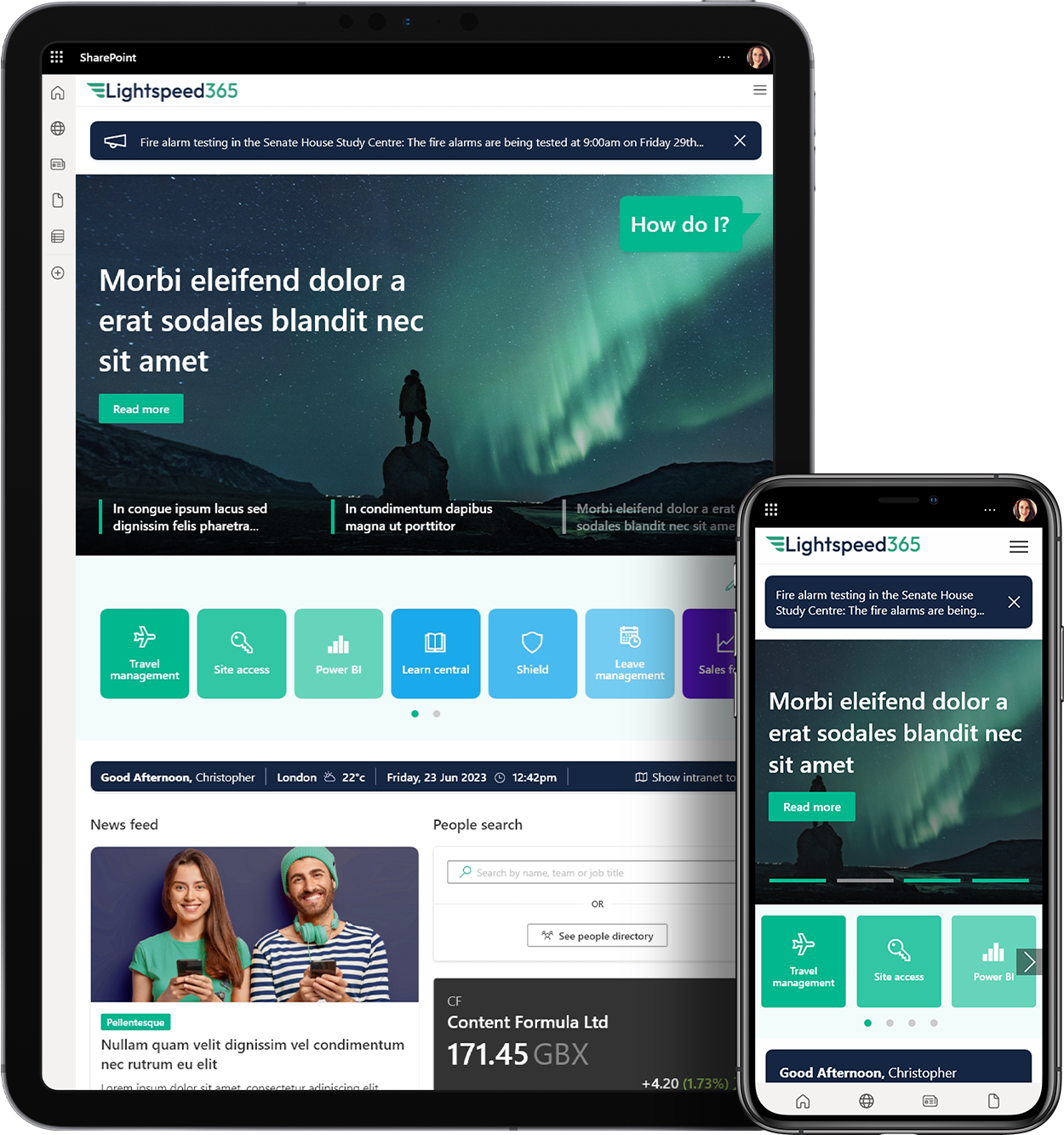 Statistics can help you understand how people use your intranet, and whether you manage a massive SharePoint solution or a smaller intranet CMS, you will want to measure the right things so that you can optimise the intranet experience. Here are six major measurements to track and ten further ideas.
Statistics can help you understand how people use your intranet, and whether you manage a massive SharePoint solution or a smaller intranet CMS, you will want to measure the right things so that you can optimise the intranet experience. Here are six major measurements to track and ten further ideas.
What to measure on your intranet
Tasks / workflows completed
Your intranet should help people get things done. Monitoring task initiation vs task completion could help you find a bad process that needs streamlining. Monitoring your workflows will show what people actually do through the year. SharePoint offers powerful workflows, but all modern intranet platforms should support business processes. If youre savvy, youll tie tasks to business outcomes, and then report the figures and the business impact. Self-service saves time and money.
Profiles
Can you monitor how many profiles are 75%+ complete? (Think, LinkedIn.) Can you count how many have decent profile pictures? In a pinch, this can be a dirty indicator of intranet engagement. People who avoid making their profile their own may be disengaged, or not realise what the intranet / ESN is capable of (e.g. the benefits of networking and skill discovery).
Goals
A website with a million visitors can still fail if those visitors dont do what the stakeholders need and expect. Eyeballs do not auto-transform into custom, as we learnt in the 90s. Your intranet must support the aims of your organisation, and should support workflows / processes, knowledge management, collaboration, communication, and community. Set goals for all the things you need employees to do, and monitor the stats so you can optimise the navigation routes, workflows, instructions, and experience. A goal could be spent 90 seconds on our How to Book Travel page. This is a specific goal because its not a mere visit when a person doesnt read the page, and because learning how to book travel should reduce the number of calls to the HR helpdesk / Office Manager. A higher value goal might be creation of / online request for new team site / project site.
Contributors
Track how many different people have contributed to the intranet this month. If your governance is very centralised and strict you might only have a dozen approved content contributors, so youre using your intranet as an old-fashioned broadcast tool. If you have modern governance or a social intranet, tracking how many different people contribute will indicate whether people see the intranet as an easy platform, or whether they prefer emailing documents to each other and using network drives instead of team sites. Those who contribute always value the intranet higher than those who only consume.
Contributions
Track the number of contributions / updates to the intranet. Beware of document dumping when a project manager decides to move hundreds of files from the network drive to the intranet, or when HR update a hundred policies with new branding. Try to look at intranet pages which are the backbone of any web (nobody wishes Wikipedia was made up of PDFs).
Page views
Youll know by now that simply counting total page views tells you nothing about the quality of the intranet. Even reporting on one specific page (todays news, the H&S landing page, the CEOs blog) doesnt quite indicate if the page was relevant, useful, or valued. But low hits might be a cause for concern, so its not like anyone is going to disregard views entirely. Fewer page views (over a section, or the whole intranet) might indicate successful information finding, but then again Andrew Wright uses page views and time spent on the intranet as a correlate for success. Its a debate worth having within your team.
Try to segment intranet usage / page views by department / office / location / hierarchy. Is there a reason why IT doesnt use the intranet at all? (Answer: yes, they use their own private SharePoint installation.) Find team sites / offices (etc.) that are very active on the intranet and find out what drives their success share their story and best practices. Find team sites / departments that havent adopted the intranet and see what support they need (probably training).
More intranet stats
- References / citations / back-links of important content. Content fulfils a need if people use it.
- Shares. Do people help colleagues find the good stuff through integrated social features or an ESN (Enterprise Social Network) layer?systems.
- Comments, feedback, and ratings. Comments and feedback can be qualitatively very valuable. There are problems with star rating
- Unique log-ins per day. Segment by department, location etc.
- Peak times for use. If people log on at 9am but your comms was published at 9:30 then youre missing the boat.
- Speed of intranet. Work with IT to monitor loading times and performance.
- Mobile log-ins. Do you allow some kind of access on supplied or personal mobile devices? What do mobile users want in comparison to desktop users?
- Search terms. Are people searching? Are they finding?
- Discussion forums. Are they used, or poorly set-up graveyards?
- Reduction of email or smaller shared drive storage. Ask IT to get involved with driving duplication and costs down.
The word intranet is a big word, and it shouldnt only refer to your intranet platform / CMS. Keep in mind the separate but integrated systems, like the enterprise social network, that makes up ‘the intranet experience’. People dont care if the room booking system is a separate application if its in the browser then its part of the intranet landscape. Decide what KPIs (Key Performance Indicators) to highlight to stakeholders, so that they judge the right things. Dont simply hand over scores of stats and graphs, use KPIs to help less-interested people understand whats going on. (Review your KPI usefulness every six months.)
Monitoring the stats will help you come to an understanding of how people currently use the intranet, but only if you can interpret the numbers with appropriate context. Dire numbers may help you work out what needs improving, but big numbers dont always indicate success. Tracking stats, and your hand-picked performance indictors, will help you prove the worth of your intranet to stakeholders helping you develop an intranet that is a true business tool.
Before assuming that obvious stats and the measures SharePoint or your tracking tool provides are good enough, remember the Intranetizen so what? test:
They say, Look! Employees love my content, look at the page views per visit. Translation: Employees clearly cant find what they want.
Dont monitor your intranet to death overly-honed systems can exclude fuzzy humans. Theres room for fun, community, and social chatter (to support your culture). If your intranet itself doesnt supply the stats you need for KPIs, see all the available monitoring tools. Check with your legal team before installing Google Analytics on your intranet.
A version of this article was first published over at Intranetizen.



 SharePoint Products
SharePoint Products

